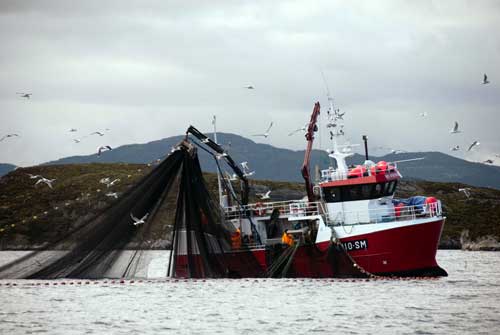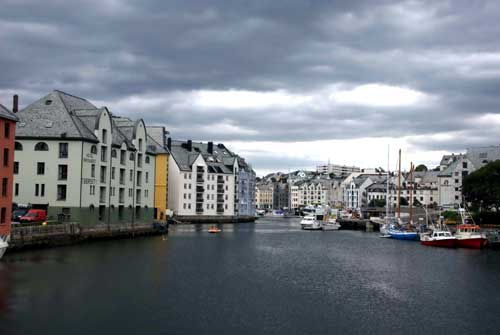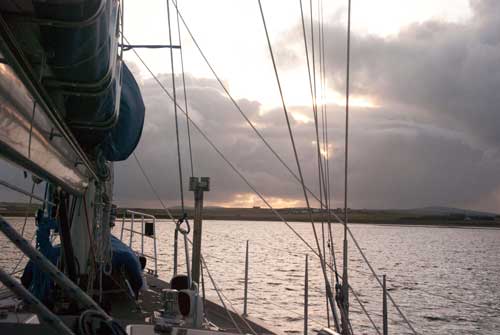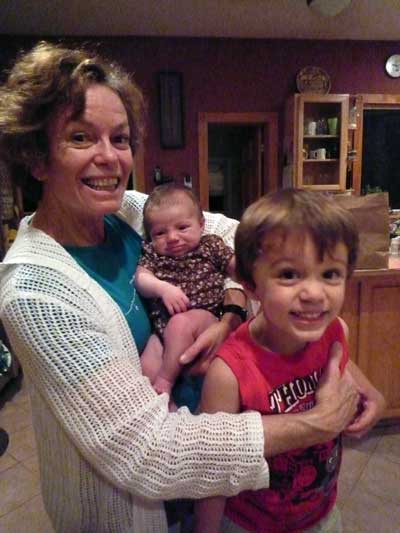|

A purse saine fisher.

Alesund, the Art Nouveau ctiy.

Between gales in the Orkney Islands.

Jeannie, Hazel and Max on a warm August night in NYC.
|
On August 14th, Jean returned to Trondheim. Jack (Jim's nephew) and Sue McNeill arrived the next day. Jack and Sue first crewed for us last year in Scotland; that trip ended abruptly when Jack broke his arm and they had to return to DC.
Jack arrived with X-Rays. There are so many pins in his arm it looks like Charlie Brown's Christmas tree.
One accident free week later we left Jack and Sue in Alesund, a city that burned to the ground on a cold January night in 1904. Kaiser Wilhelm provided relief and assistance in rebuilding this city that he loved to visit. The effort attracted leading Art Nouveau architects and craftsman. Today, their creation attracts an international crowd of art lovers.
The mid August wind shift to the south west had replaced the north easterly summer flow. We had hoped to sail directly to the Shetland Islands but the winds blew from that direction so we moved through the sheltered waters to the south toward Bergen, looking for an opportunity to head across the North Sea when the wind shifted.
Our break came on August 25th. The winds moderated and shifted to the south. We left and had a nice sail for twelve hours. Then the wind gradually increased to over 30 knots before dropping back two days ago when we arrived here.
September 10, 2009
57 29N 14 14W Inverness Scotland
We will not get back to Oban this year. Onora will spend the winter here in the water. Inverness lacks the facilities to store her on land and she has no ability to power through the canal.
Ten days ago the gales took a break and we left the Orkney Islands to cross the one hundred and ten miles to Inverness. Our fair wind died out in the early afternoon at the halfway mark near Wick, Scotland. On went the engine. This was soon followed by a bang and a grinding noise from the engine room. An inspection revealed that the transmission casting had separated from the shaft coupling underneath which sat a puddle of transmission fluid .
We were set back to the old fashion way of relying on wind to move. We sat and waited for it to come up. Up went the sails to catch the first light breeze that moved us along at 2 knots. Fortuneatly this increased, giving us a nice sail. It died away as we neared Inverness at ten that night. We could go no further until the tide turned. Into the dark water went the dinghy which pulled Onora to shore where she rocked at anchor for the night.
The next morning we were towed into the mouth of the Caledonian Canal where a more thorough analysis concluded that the shaft would have to come out to fix the coupling problem. This would require hauling out of the water and dropping the rudder to slide the seven foot shaft out of the boat. With our time running out and the marina short of a stand to rest her on we decided this project will have to wait for spring. We have not stored her in the water before but this is a secure place protected from the weather.
We will return to Chicago tomorrow to rejoin our land life of grandchildren, business and planning for next year's sail in the Baltic.
|